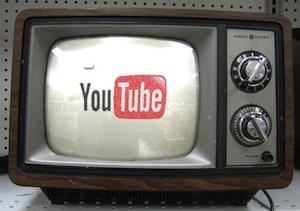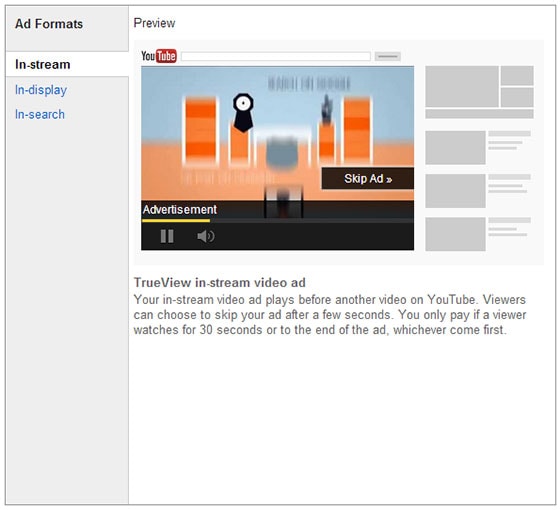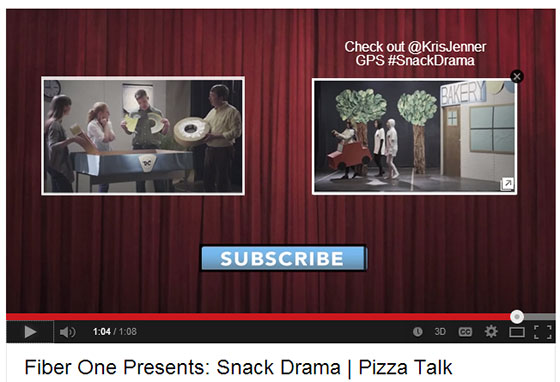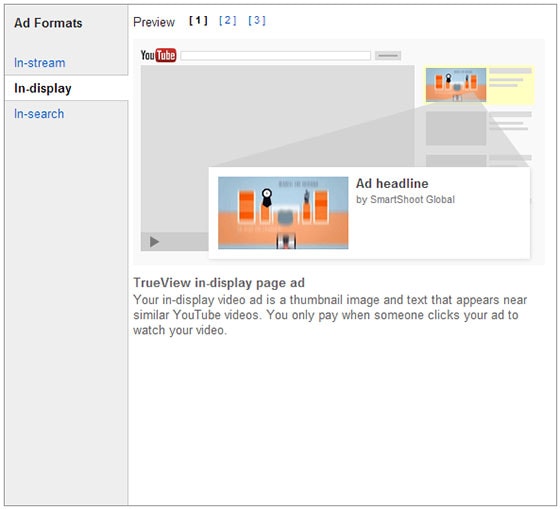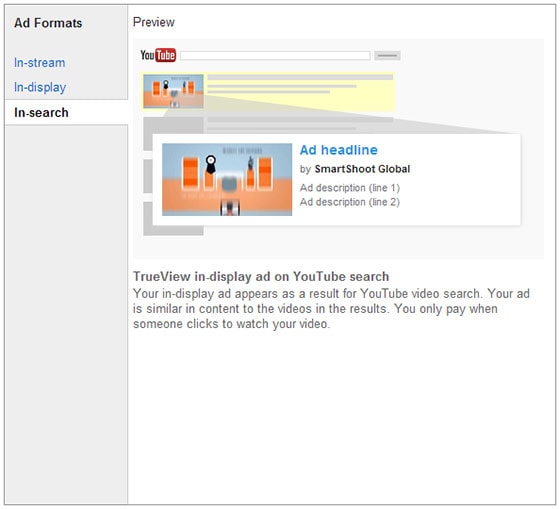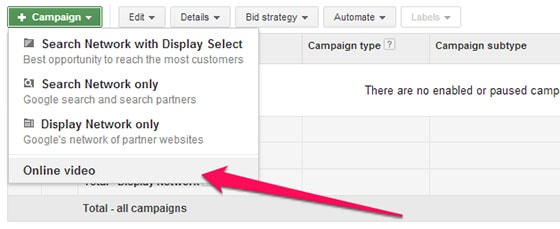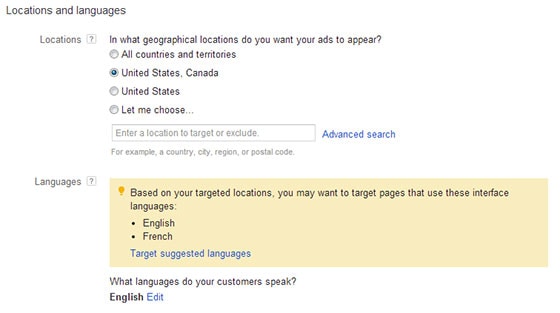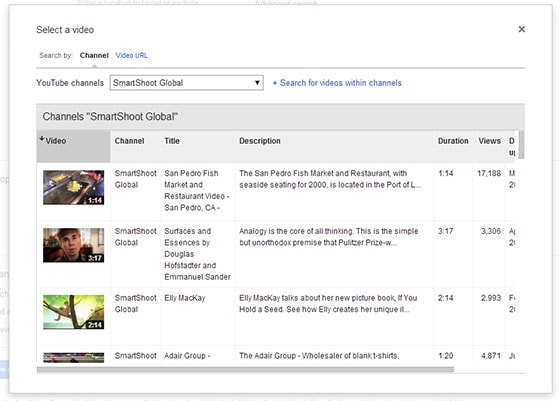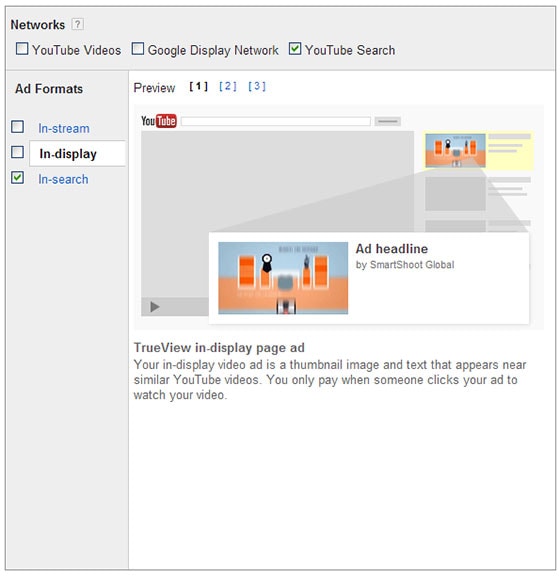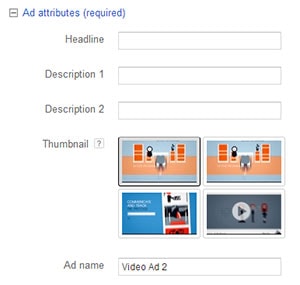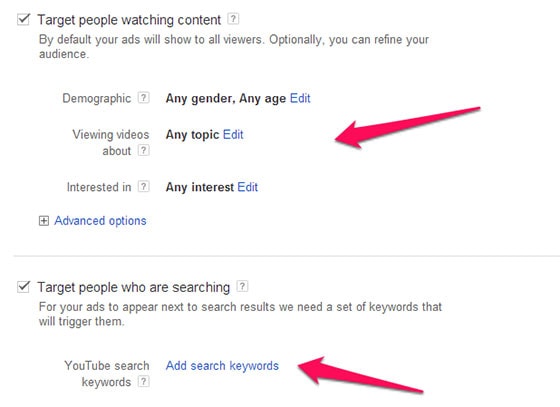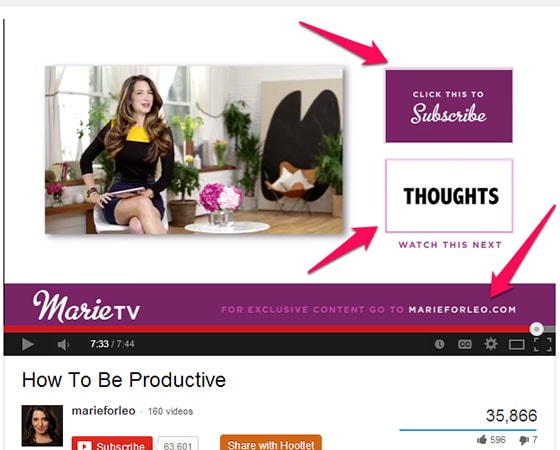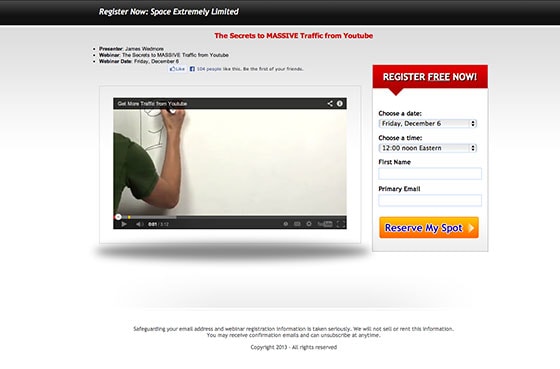YouTube is the undisputed #1 online video platform, attracting more than 800 million viewers per month.
Combine that audience with
Google’s AdWords targeting capabilities and it’s clear marketers have the opportunity to reach new customers locally and around the world with YouTube advertising.
The emotional power of video also allows marketers to make a more personal connection with their audience than they can with other types of paid advertising.
In fact, advertisers who ran a YouTube video campaign saw an average increase of 20% more traffic to their site, according to Google.
Want to get in on that? In this post, I’ll take you through:
- The 3 types of YouTube ads
- How to create your video ads
- How to optimize your video ads (with the help of landing pages)
Let’s get started…
The 3 Types of YouTube Ads
Unlike cost-per-click (CPC) or cost-per-thousand impressions (CPM) pricing, with YouTube ads – officially known as TrueView ads – you only pay when a viewer watches your video.
While video content for TrueView ads must be hosted on YouTube, the ads can appear on both YouTube and other publisher sites in the Google Display Network.
Let’s get to the various TrueView ad formats and how to best optimize each one:
1. TrueView InStream
InStream ads play like traditional TV commercials at the beginning of monetized YouTube videos. Viewers see five seconds of your ad and then can choose to keep watching or skip the rest. If they choose to watch at least 30 seconds of your ad, you pay a “cost-per-view” price.
For InStream ads, you should avoid repurposing your existing video content and create a separate ad that’s compelling right off the bat.
Here’s a fun example from Kmart called “Ship My Pants”:
Some strategies to follow with InStream ads:
- Keep it short – the ad should be around 30 seconds and no longer than 60 seconds. From our analytics, we see a roughly 80% drop off in viewership after the 60-second mark.
- Make the first 5 seconds count – users can skip your ad after 5 seconds so you’ve got to hook them and convince them to stay.
Don’t want your customers to skip? Just tell them:
- Include a Call to Action – tell viewers what you want them to do after watching your ad. End your video with a static call to action and give your viewers enough time to click.
2. TrueView InDisplay
InDisplay ads appear as a thumbnail and text in the right-hand pane of suggested and recommended YouTube videos. You pay a “cost-per-view” when a user clicks-through your ad and begins watching your video.
Unlike InStream videos, InDisplay ads are a great place to promote your existing video content. Just make sure to follow the best practices below:
- Drive viewers to more content – Use annotations to drive viewers to playlists, other videos, or a landing page.
- Create a compelling thumbnail – Upload a clear, interesting, and creative thumbnail to entice users to click your video ad.
- Use Call to Actions – make sure the video includes calls to subscribe, like, watch more content or visit your website.
3. TrueView InSearch
InSearch ads appear on the YouTube Search results page. Similar to InDisplay ads you pay a “cost-per-view” when a user clicks through your ad and begins watching your video.
Similar to paid search ads you have the ability to create a custom headline (25 character limit) and a custom description (35 characters per each description line).
InSearch ads look a lot like InDisplay ads, so it’s important to follow the same best practices, including a compelling thumbnail and CTAs to promote subscribes, likes, or website visits.
How to Create Your Video Ads
Now that you’re familiar with the different types of YouTube ads, let’s take a look at how to actually create a video ad.
Step 1: Create Video Campaign in Adwords
Log-in to your AdWords account. Go to your campaigns, click on the “add new campaign” button and select “online video.”
Step 2: Set Your Budget
Give your campaign a name and then select how much you’d like to spend per day.
Step 3: Select Your Desired Location and Language
Select the countries and languages in which you’d like your video to appear.
Step 4: Select a Video and Ad Type
You can select your video through search or simply input your YouTube video URL (ie. https://www.youtube.com/watch?v=XXXXXXXXXXX)
Next, choose the video ad format. Then select whether you want your video ad to show up on YouTube, Google Display Network or YouTube Search.
Note that where your video can be displayed depends on the ad format. If you select In-search, for example, YouTube search is the only available ad network.
Step 5: Write Your Ad Copy
Enter your headline and ad text. You are limited to 25 characters for the headline and 35 characters for each description.
Then, select your thumbnail and give your ad a name.
If you select In-search or In-display as the ad format, you’ll need to decide whether you want people to watch your ad on your watch page or your channel page.
Step 6: Select Targeting
Determine the maximum cost per view that you’re willing to pay. Google will show your predicted views per day based on what you enter.
Finally, select who you want to target based on gender, age, video topic, and/or keywords.
How to Optimize Your Video Ads
We’ve arrived at the part you’ve been waiting for! Here’s how to optimize your video ads for maximum conversion.
1. Optimize Your Thumbnail
When optimizing your video thumbnail for the highest CTR, all you have to do is take your shirt off. At least that’s the strategy Mike Chang uses when promoting his fitness videos. Given that he has more than 2 million subscribers and 276 million views, I’m not going to dispute him.
Of course, his channel is all about fitness so it makes sense for him to show some skin. The key lesson is to make sure your thumbnail begs the user to click on it.
As we’ll see below, you can target your ad by demographic or keyword, so you should know what resonates with your audience. Always test, test, test as many variations as you can.
When I did a search for “sit ups” on YouTube, I saw about 5 different ad variations for Mike Chang’s YouTube channel.
While he wasn’t shirtless in all the ads, here are a couple more variations that I saw (sorry, Mike):
2. Create Compelling Product Demonstrations
One of the best ways to leverage YouTube is to show off your product’s features and benefits.
ZAGG, which is best known for its line of protective coverings for mobile devices under the brand name invisibleSHIELD, creates 3-4 videos for every new product rollout. One of its most popular YouTube video clips is a demonstration of an iPhone emerging unscathed after being subjected to 1,000 pounds of weight.
As a result of its YouTube ads, ZAGG reports a 65-75% increase in conversions as well as a boost in its search traffic.
3. End the Right Way
You always want to end your videos with a simple and easy call to action. Google would love for the viewer to stay on YouTube, so they suggest you make it easy for them to watch more videos or subscribe to your channel. But the right call to action for you depends on your goals.
Some brands may want more subscribers and views whereas a brand like ZAGG will want you to click away and buy from their website (or, ideally, their landing page).
One simple and effective way to gain new subscribers is to just ask for it. You will find that a lot of popular video bloggers either point to the subscribe button or just come back on screen during the final seconds.
If you are ending with a link to your landing page, you’ll want to make sure the landing page flows from the video in terms of message match and design match.
For example, at the end of his video on how to drive more traffic from YouTube, James Wedmore encourages viewers to sign up for a webinar on the same topic by clicking on a link in the video description.
That brings up a landing page that contains the same video and a call to action to register for the webinar (though if I were him I’d probably add my YouTube headshot to the page to further reassure visitors they’ve come to the right place).
Using the tips outlined above you’ll be able to use video ads to drive targeted traffic to your YouTube channel or landing page, tapping into YouTube’s massive and highly engaged audience.
Did I miss anything? Tell me: how have you used YouTube to drive more traffic, subscribers or views?
